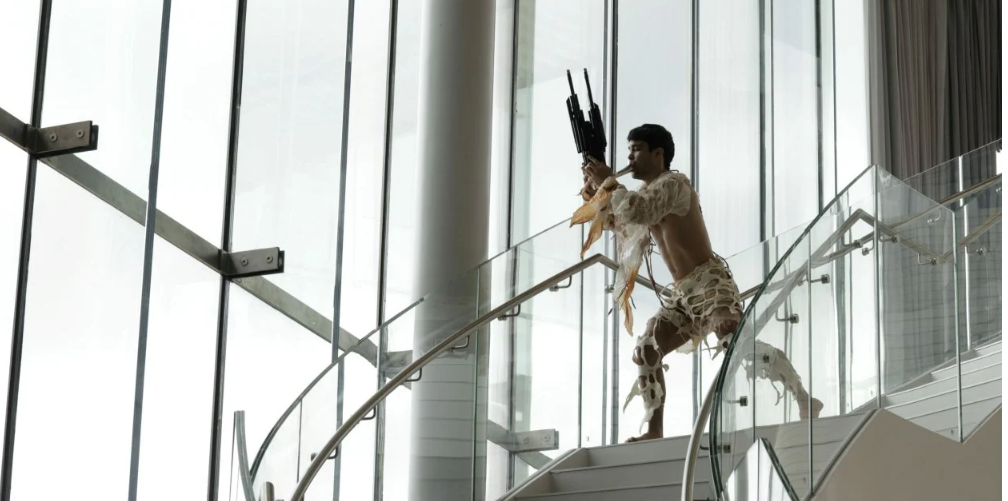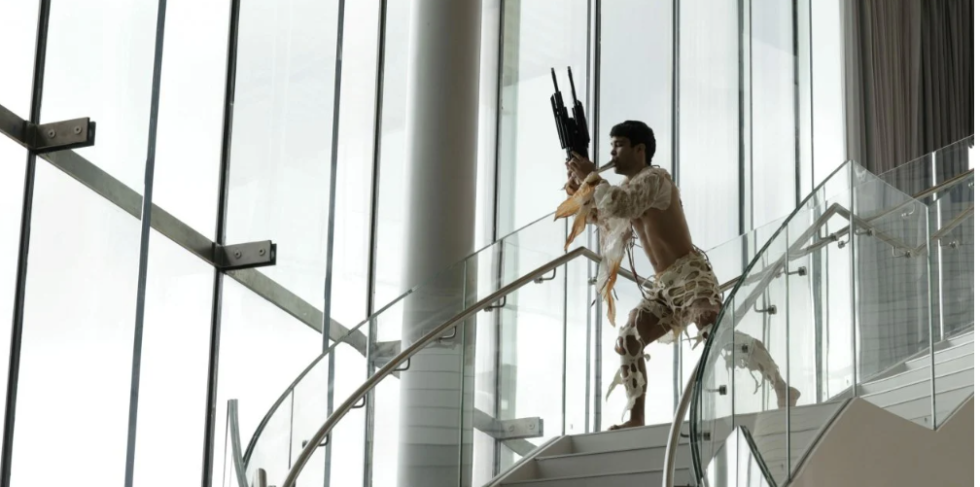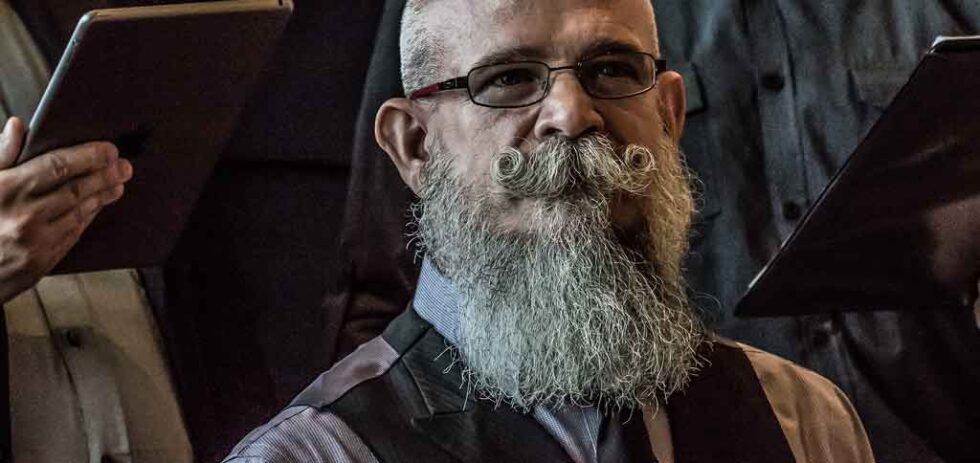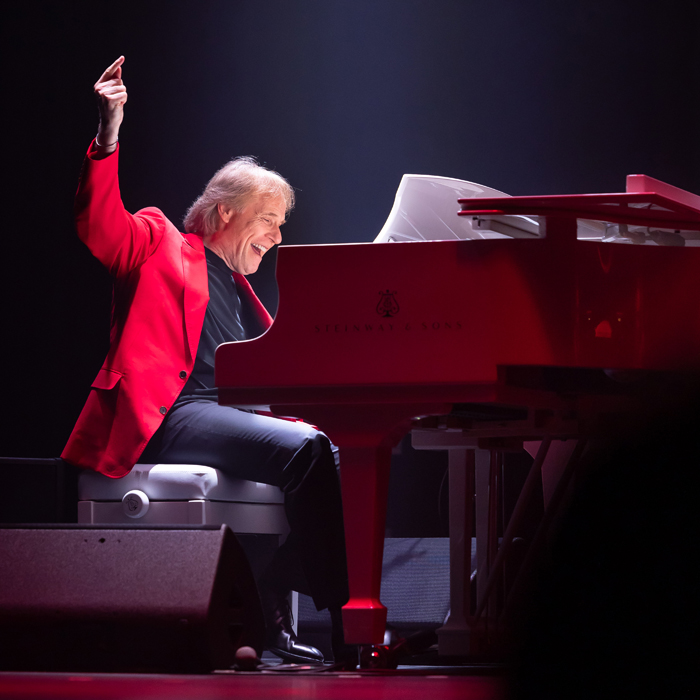
During World War II a vast, underground bunker full of fuel for Australian and Allied ships lay in the periphery of Sydney’s Domain parkland. In the 1980s it was drained and then abandoned for decades. The Art Gallery of New South Wales recently made it the dimly lit jewel of its new contemporary wing. The Tank, as it has been dubbed, is a cavernous structure filled with more than a hundred concrete columns. Over the past two weeks, the space has hosted a range of works programmed for Volume, a new “sound and vision” festival that privileges encounters of the unexpected kind.
Last Friday night, American musician Solange had revellers down in the bunker following her every movement for the performance In service to whom. Bathed in red light, the singer and her incredibly tight band – featuring double bass, horns, guitars, drums and piano – generated walls of sound that spliced old material with looped compositions. Honeyed vocals, exultant screams and blurry speech samples tangled together, echoing throughout the Tank.
Solange was a mix of contained reverence and fevered enthusiasm – periodically she jumped or bolted across the low, makeshift stage. At one point she disappeared from the main stage and popped up in a corner in front of a translucent bathtub. She proceeded to fill it with a hose, hop in and sing (“don’t let your water dry”) as she bathed. While I appreciated the spectacle, the performance art felt obvious and a little forced.He staggered around the lower level of the gallery wielding a sheng, a Chinese mouth organ made from bamboo pipes. The performance was a feat of breath.
In recent years, I’ve become increasingly exasperated by attempts at accessibility by galleries that forfeit surprise and experimentation, trafficking instead in the obvious, the garish, the most internet-friendly work. It treats audiences like fools and, worse, it closes them off to engagement with art that is more confronting. Shock and confusion are feelings institutions should encourage, not shy away from. They are also experiences that should be offered for free, for a large, mixed audience.
This for me was one of Volume’s great strengths. Its free program is fantastic and – most importantly – truly experimental. I was delighted to wander into the art gallery’s old building on Tuesday night to see a large crowd reverently listening to Brisbane duo Primitive Motion, who were in the middle of cultivating one of their elegiac, ambient soundscapes from field recordings, electronics and melancholy saxophone.
Afterwards came Melbourne-born, New York-based artist JG Thirlwell, best known for his solo project Foetus (you also might know it under the titles Foetus Under Glass, You’ve Got Foetus on Your Breath, Scraping Foetus Off the Wheel, Foetus Interruptus, The Foetus All Nude Revue, among others). Foetus is often lumped in with the industrial music of the late ’80s and ’90s – think Nine Inch Nails and Ministry – but Thirlwell’s work has always had a sly, carnivalesque edge. Sure, there were those typical gurgling vocals and grumbling guitars, but his sound was expansive, ranging from swampy terror to hymn-like incantations. His performance at the gallery, the Australian premiere of his new work Silver Mantis, was nowhere near as frightening as Foetus, but still retained these sonic poles.
Thirlwell, with a mop of red hair and wearing a tight denim jacket, crouched over a synthesiser in the foyer. Behind him was a projection of images by Swedish artist Sten Backman: goopy, volcanic abstractions. The sounds discharged were similarly slimy, almost surgical – they conjured up horror film soundtracks of ripping flesh or organs being rearranged. Among these sounds was something more fecund and natural – noises that replicated the crash of pebbles or boots slapping into a muddy trail. Thirlwell moved on to stewarding sound from a theremin. I was transfixed by the precision of his hand, curled up and slightly vibrating, which made the instrument emit a stretched-out, unearthly drone.
I was a little disappointed by the presentation of a collection of short works by Corinne and Arthur Cantrill, the Australian filmmaking couple whose sensual and tactile works are rarely shown. In the new wing their films were projected onto two sandy-coloured walls that diluted their textural power. This was especially true for their colour-separation film Waterfall (1984), a riff on 19th-century landscape photography, where the shutter speed is slowed and three moving images are superimposed onto one another to create a fluorescent and hallucinatory portrait of MacKenzie Falls. This is a work that needs to be seen in pure darkness – somewhere such as the Tank.
The next day the gallery presented a performance by Sydney stalwart and experimental pop force Marcus Whale. His solo work is all about annihilating longing, conveyed through mournful electronics and the artist’s anguished, beautiful vocals. Here he offered something more elemental, which still conveyed his central themes: fear and pleasure mingling, the liberatory and creative capacities of bodies in motion.
Megan Hanson designed Whale’s costume, a ragged tangle of white cloth that looked as if it had been caught in a thicket of thorns. He staggered around the lower level of the gallery wielding a sheng, a Chinese mouth organ made from bamboo pipes. The performance was a feat of breath. At first, that was mostly what it was – the sound of pained, exhausted breathing funnelled through pipes, thickening into a strange, beautiful rhythm. Then Whale put the wind instrument’s organ capacities to good use. Those wheezy, Gothic dirges subsumed the space, especially when Whale took to the escalator and the new building’s spiral staircase, as he held the sheng towards the sky.
A modest crowd had gathered at the beginning but that quickly grew. Little kids jumping and running around the gallery stopped to watch, entranced. Couples congregated on the upper level’s balcony, gazing down. Some swiftly walking passers-by, caught in the action, were compelled to halt in their tracks. This was typical of what Volume offered over the week: the congregation of strangers, thrown into the orbit of unheard or abnormal melodies whose reverberations are eternal.
Volume is at the Art Gallery of NSW until October 8. (Isabella Trimboli)



